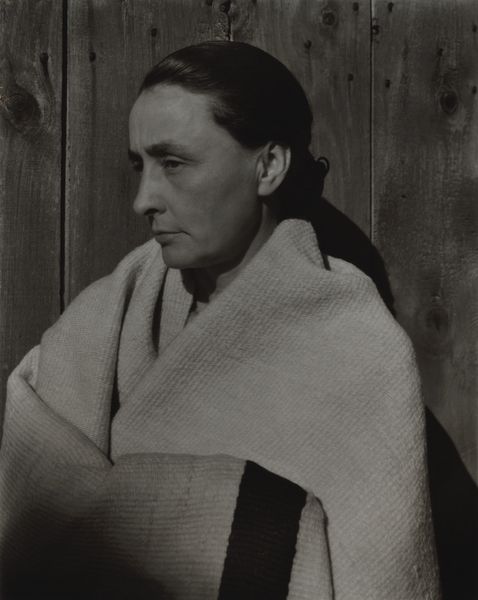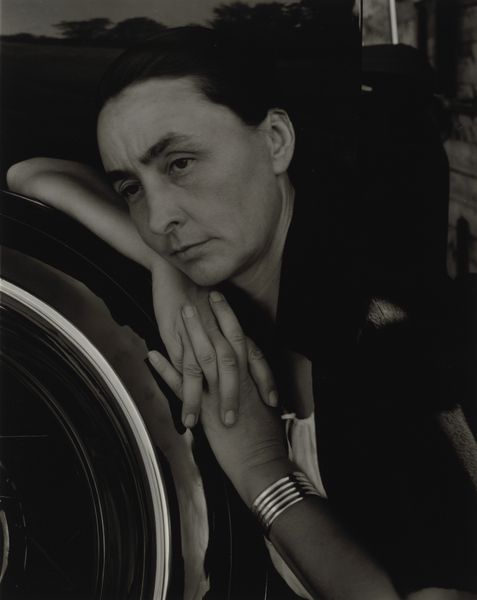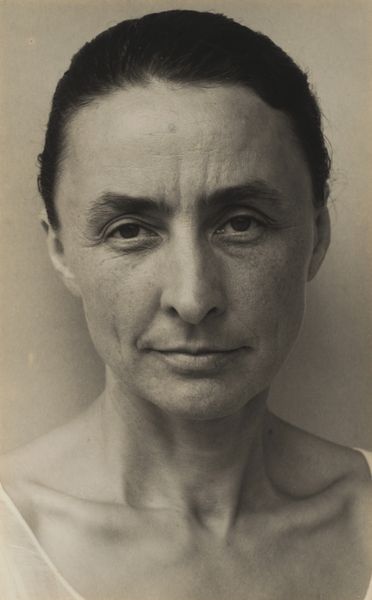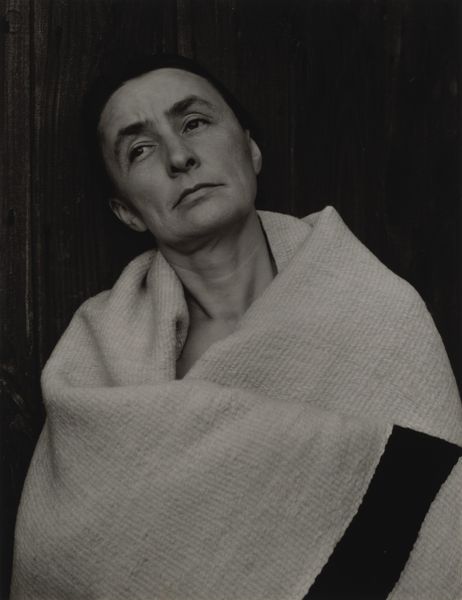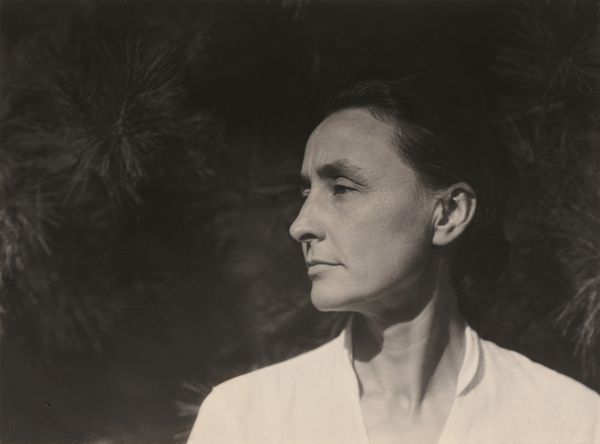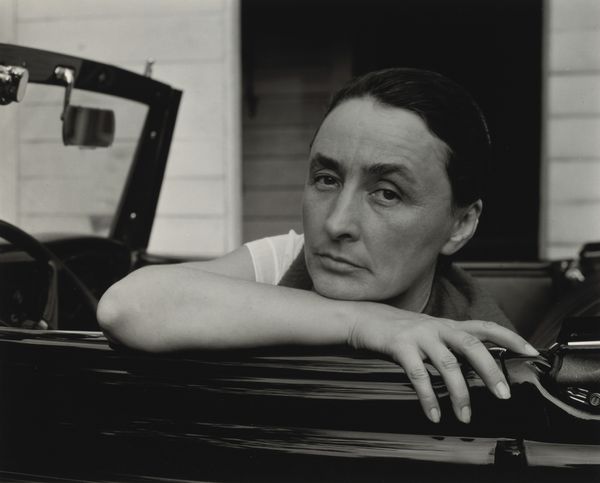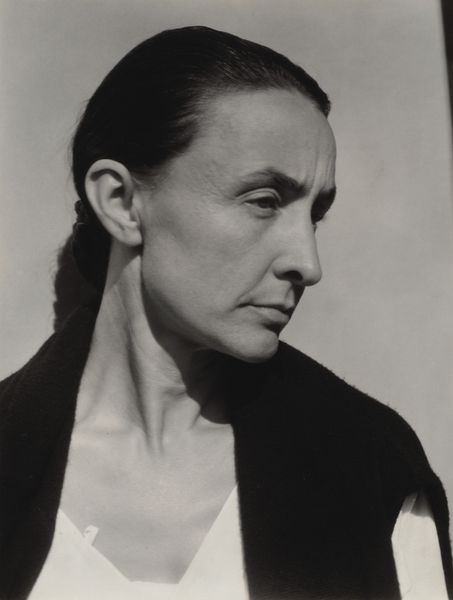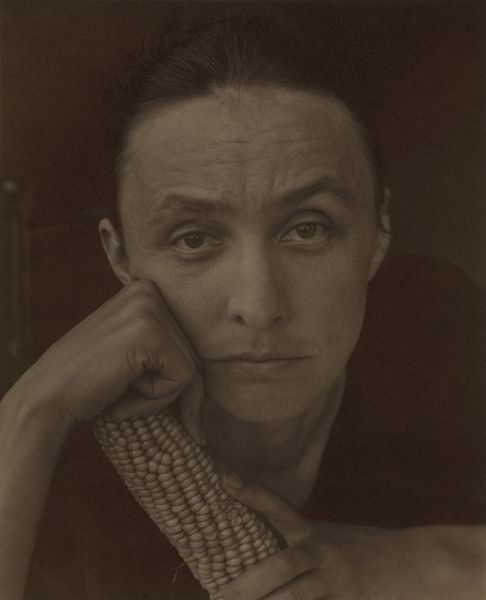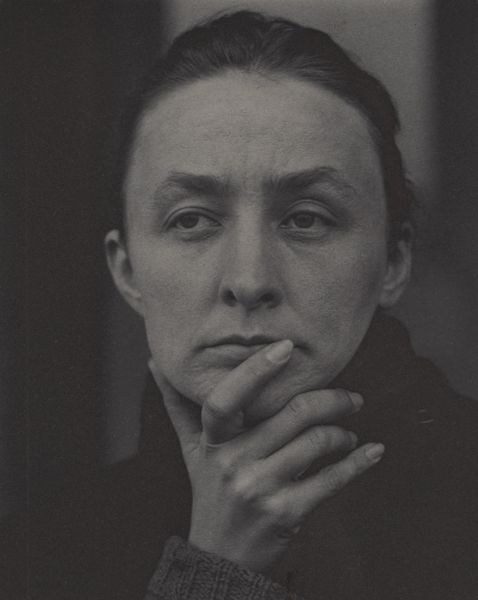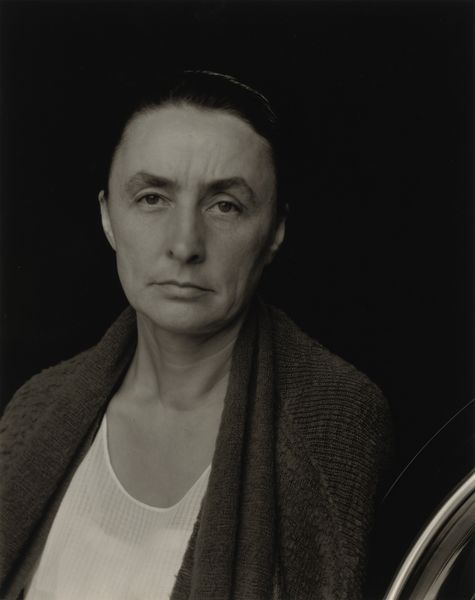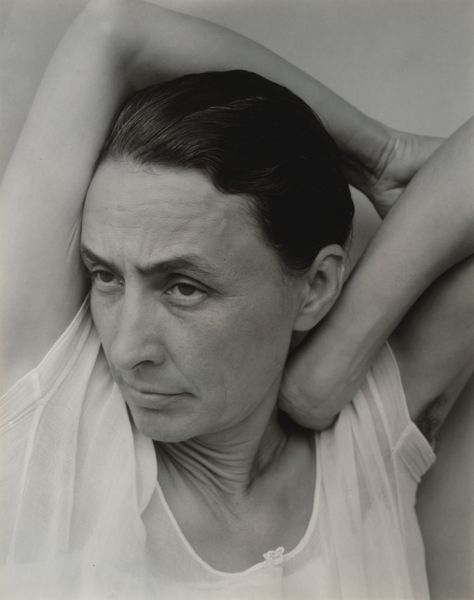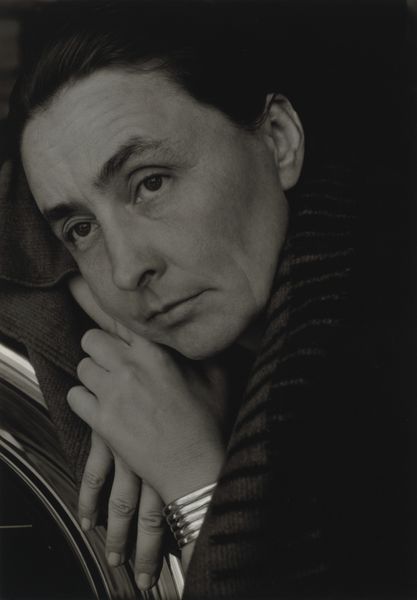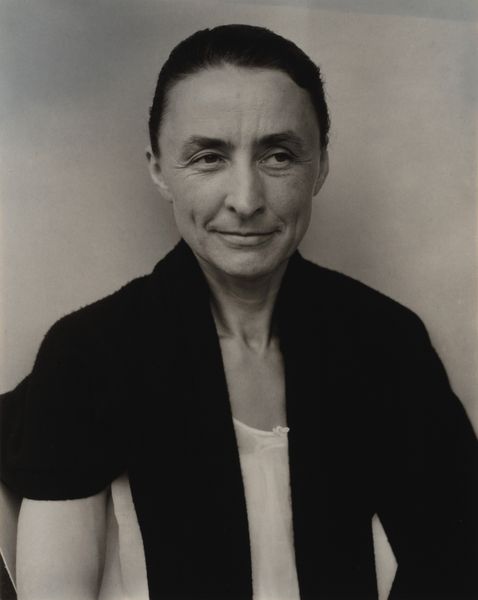
photography, collotype
#
portrait
#
still-life-photography
#
pictorialism
#
portrait
#
photography
#
collotype
#
modernism
#
realism
Dimensions: sheet (trimmed to image): 23.8 x 19 cm (9 3/8 x 7 1/2 in.) mount: 52.9 x 39.8 cm (20 13/16 x 15 11/16 in.)
Copyright: National Gallery of Art: CC0 1.0
Curator: Here we have Alfred Stieglitz’s portrait of Georgia O'Keeffe, taken in 1931. It’s a collotype, showcasing a different facet of their collaborative artistic relationship. Editor: The textures jump out at me—the grain of the wood backdrop juxtaposed with the soft, enveloping wool of her shawl. It feels very deliberate, like a study in contrasts using purely tonal means. Curator: Absolutely. Stieglitz meticulously crafted his photographs, seeing them as equivalent to paintings in artistic merit. His work, influenced by Pictorialism and Modernism, often elevated his subjects to icons, and O'Keeffe certainly became one. Editor: Icons are crafted, though, aren’t they? The material conditions are always present. Look at the weaving pattern of that shawl—it's almost assertive, a quiet counterpoint to O’Keeffe's own stoic profile. We forget these photographs aren’t just about "great artists"; they're about the whole process. Curator: You’re right to point that out. Stieglitz positioned himself as the champion of modern art in America, using his gallery to introduce European avant-garde to the public. Portraits like this reinforced a certain image of the artist – intellectual, dedicated, and aesthetically uncompromising. Editor: And O’Keeffe, equally aware of her image, participates in that construction. Her direct gaze and simple clothing choices contribute to a narrative of austere dedication. There's a material simplicity there that’s potent. Curator: It’s impossible to separate Stieglitz’s photographs from their role in shaping O’Keeffe's public persona, cementing her status in the art world. Consider his influence in relation to museums, collections and ultimately, the canon. Editor: Thinking about the way the light interacts with her skin – it's incredibly direct and honest. But "honesty" itself can be a calculated effect, can't it? It speaks to the cultural values placed on labor and “authenticity”, even within such a refined portrait. Curator: Examining the photograph allows us to reflect not just on the individual artists, but on how art history itself is made. Editor: And remade constantly, as we view and engage with it through our own filters, finding new textures in its meaning.
Comments
No comments
Be the first to comment and join the conversation on the ultimate creative platform.
